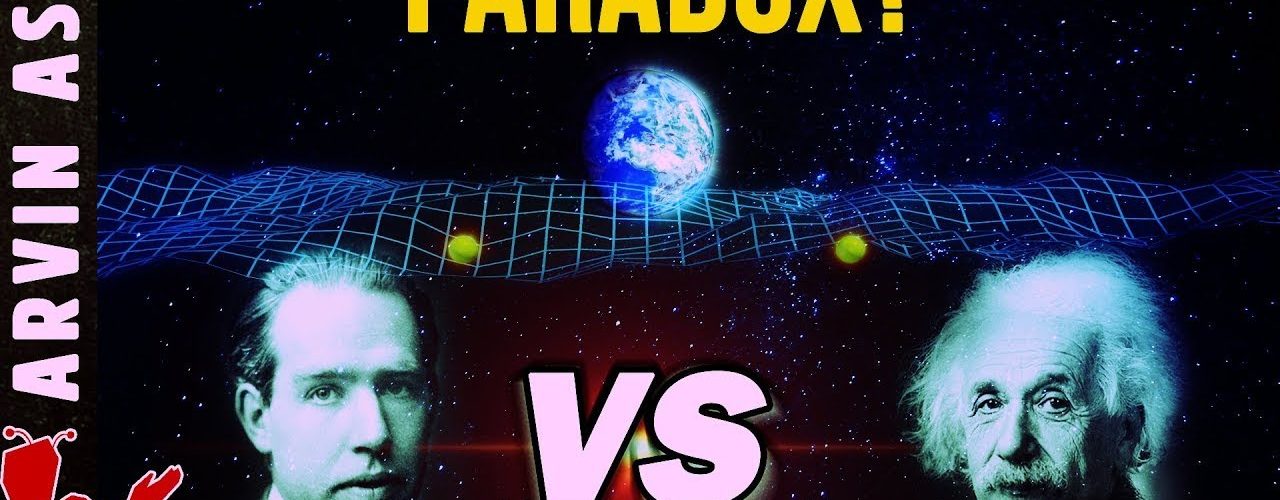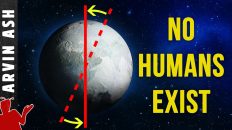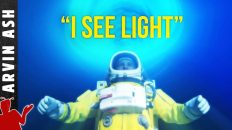Part 1
The experiment that proved Einstein wrong! Quantum entanglement, Bell’s inequality, EPR paradox, nonlocality
Two of the biggest intellectual giants of modern physics changed our view of reality, and proposed their theories around the same time in the early twentieth century. Yet, their views about reality were completely different.
Niels Bohr, one of the founders of modern quantum mechanics and father of the Copenhagen interpretation which argued that reality, or the state of particles at the fundamental level was not only unknown, but was unknowable, until it was measured.
Albert Einstein passionately disagreed with this idea, and believed that reality WAS knowable and that probabilities could not completely define reality, that there had to be an objective reality out there independent of measurement.
He famously said, in his dramatic statement, “Do you really believe the moon only exists when you look at it”
Bohr and Einstein argued passionately about their views on the essence of reality. And for 30 years, both views were considered equally valid, and scientists chose sides.
Then in 1964, Irish physicist John Bell devised a way to prove whether Einstein’s view of a classical, deterministic view of reality was correct, and he put this in a simple elegant equation – called the Bell Inequality.
Although, the equation is simple, understanding what it means is not so easy. So how did this simple equation disprove the ideas of the most famous and powerful scientist of the 20th century, and forced us to confront the unsettling truth that we may live in a fundamentally nondeterministic universe. The answer is coming up right now!
The central weirdness of quantum mechanics can be demonstrated with a dice. If the dice was a quantum system like a photon, electron or atom, it would be in superposition. That is, its position and other properties, in a sense would be up in the air like a dice thrown before it hits the table. It is a 1, 2, 3, 4, 5, and 6 all at the same time. According to the most accepted interpretation of quantum mechanics, the Copenhagen interpretation, pioneered by Neils Bohr and Werner Heisenberg, its not only that the dice’s value is not known, but that it is all values at once. It’s value can only be known once it is measured.
The double slit experiment demonstrates this. A single photon passing through the slit should not be thought of as a particle going through, and interacting with itself. Rather, it is like a three dimensional wave or a cloud of probability when it is emitted. This wave can go through both slits at once and interferes with itself like a wave does, before it is measured by the photo sensitive screen in the back, when it resolves to a specific location on the screen.
Einstein, who was the most famous scientist at the time, was bothered by this interpretation of quantum mechanics. The idea that a part of nature remains not only unknown, but is unknowable unless measured. That’s why he famously said, “God does not play dice.”
So Einstein along with two other scientists, Boris Podolsky and Nathan Rosen (EPR for short) came up with what they thought disproved the Copenhagen interpretation. The crux of their argument rested on the idea of a phenomenon in quantum mechanics called entanglement.
Let’s say we have a quantum system that has a zero angular momentum, also known as spin zero, and it emits two photons simultaneously. Since photons have spin, and since angular momentum must be conserved, if one photon has a spin up, the other photon must have a spin down. So the spin up and down cancel each other out. This is entanglement. The two photons are not independent. If spin of one of them is known, the spin of the other becomes known instantaneously.
Now let’s take these photons far apart, let’s say 300,000 km, which is about 1 light second away. Now according to quantum mechanics, each of these photons is governed by a wave function, and each photon is in a state of both spin up and down at the same time. It is not up or down, it is up AND down. However, the wave functions of these photons is not independent. They are really the same wave function governing both photons. Now if we measure the spin of one of them. We have a 50% chance of detecting a spin up. Let’s say we detect this as spin up. Now let’s measure the spin of the other photon in less than one second, it should also have a 50% chance of having spin up or down. But it doesn’t, it has a 100% chance of having a spin down.
This means that the information of the collapse of the wave function of one of the photons had to travel faster than light to affect the other photon. EPR argued that since nothing can travel faster than light according to the rules of special relativity, this should invalidate the Copenhagen interpretation.
EPR proposed instead there is likely another theory which would show that the two entangled photons were in cahoots from the very beginning, that their states were predetermined from their creation. In other words, their states contained the information locally, so that when they were moved apart, no communication had to take place. The information that we were measuring was hidden inside the two particles. This is called local hidden variables.
So for example, it’s as if the two particles were a pair of gloves. One was a left hand pair, and the other was a right hand pair. Once we found the left hand pair, we knew immediately that the other pair, no matter where it was in the universe, must be a right handed pair. This was a valid interpretation of quantum mechanics for almost 30 years,
From 1935 to 1964. This could not be disproven. This is where Irish physicist, John Bell comes in. in 1964, he proposed an experiment that could show whether the local hidden variable theory was correct, or incorrect.
Bell’s equation is remarkably simple. But, it is one of the most difficult to understand and simplify. So I will present a highly simplified idea of how it works, then also show you simplified version of the mathematical underpinnings later in this video.
We are going to play a game with the universe, of guess the color of checkers pieces. I want to give a big shout out to Jim Al-Khalili who shows a similar simplified illustration in a documentary available on Magellan TV. I encourage you to check it out because it is fascinating.
If I guess the color correctly I win, if I am incorrect, the universe wins. In the first game I declare that if the colors match I win. The universe picks the pieces. In play after play, I find that I lose every time.
So in the next round, I change the rules. This time, I declare that if the colors are different I win. The universe picks the pieces. In play after play, I find that I lose every time.
So, I conclude that the universe has rigged the game against me. This is what Einstein suspected was happening. That the deck of cards was rigged. He believed that the colors of the pieces were predetermined, and that this information had been known from the beginning when the two pieces were together. Niels Bohr’s idea was that the red and black don’t even exist until the piece is turned over.
So, I change the rules of the game again. This time, I do not tell the universe whether matching colors, or different colors will win the game until after the universe has already picked the checker pieces.
If after revealing the checker pieces, I find that I win 50% of the time, and lose 50% of the time, then my conclusion is that indeed the checker pieces were rigged from the very beginning, because my chances of winning would be 50% if the red and black pieces were already picked by the universe. But if I continue to lose, then I have to conclude that somehow the colors of the checker pieces were not chosen ahead of time.
Part 2
Let’s look at how Bell’s elegant equation proves my conclusion. To do this, let’s look at a universe where local hidden variables are correct.
In other words, entangled particles have predetermined properties which are complementary to each other at the moment of their creation. Note that this is not an interpretation of quantum mechanics. It’s an alternative to quantum mechanics.
So in this system, when two entangled particles are produced from a process that that conserves linear and angular momentum, we will get two particles that go off in opposite directions, and they will have opposite spins, as well as opposite directions.
Let’s say that Alice makes the measurement on particle 1 in her laboratory, and Bob makes the measurement on particle 2 in his laboratory. And let’s say that the two labs are very far apart and are not in communication with each other.
If Alice measures the particle’s spin in the Z direction as positive, Bob will always measure the spin as negative in the Z direction. If they measure the spin in the X direction which is orthogonal to the Z direction, or 90 degrees apart, the same type of complimentary opposite spins will be measured, because, as I said earlier, angular momentum is always conserved.
What Bell’s inequality does is, it says, now let’s make a third measurement that is somewhere in between the two orthogonal directions, in our example we will use 45 degree angles to the Z and X direction, And we will call this the Q direction.
So in a universe where local hidden variables are true, when the two particles are emitted, they know what their state is going to be in all three directions, Z, X, and Q from birth. And there are only 8 combinations or possibilities of spins that each particle could have. So for Alice and Bob, these 8 combinations will be following:
Event 1: Z is positive, X is positive, Q is positive
Event 2: Z is positive, X is positive, Q is negative
Event 3: Z is positive, X is negative, Q is positive
Event 4: Z is positive, X is negative, Q is negative
Event 5: Z is negative, X is positive, Q is positive
Event 6: Z is negative, X is positive, Q is negative
Event 7: Z is negative, X is negative, Q is positive
Event 8: Z is negative, X is negative, Q is negative
Again, these 8 events are all the possible combinations of spins that Alice or Bob could measure.
Now, let’s ask the question, what is the probability that Alice measures in the z direction, gets a positive spin, and Bob measures in the X direction and gets a positive spin? Well, if the above case is for Alice, there are 4 events where Z is positive. In order for Bob to get X positive, Alice would have to have measured X as negative. So these would be in event 3 and event 4. To get the probability we have to divide by the total number of events, 8.
Let’s do this for two more scenarios. What is the probability that Alice measures positive in the Z direction, and Bob measures positive in the Q direction? In this scenario, it would be event 2 and event 4. Again we divide by 8 to get the probability.
And the third case is: What is the probability that Alice measures positive in the Q direction, and Bob measures positive in the X direction? This would be event 3 and event 7, divided by 8 for probability.
P(Z+, X+) = E3 + E4/8
P(Z+, Q+) = E2 + E4/8
P(Q+, X+) = E3 + E7/8
So these are the three probabilities given the hidden variables theory. Now here is big insight that John Bell had:
If I take the total number of Events, and multiply that by the probability that Alice measures Z positive and Bob measures X positive, this has to be less than or equal to the total number of events times the probability that Alice measures Z positive, and bob measures Q positive, plus the probability that Alice measures Q positive, and bob measures X positive.
8*P(Z+,X+) <= [P(Z+,Q+) + P(Q+,X+)]*8 The eight cancels out, and we are left with just the probabilities: P(Z+,X+) <= P(Z+,Q+) + P(Q+,X+) – This is essentially Bell’s inequality expressed in a different way I can prove this is true by doing simple math: (E3 + E4)/8 <= (E2 + E4 + E3 + E7)/8 The eights cancel out, and we rearrange the order of addition, and we are left with this: E3 + E4 <= E3 + E4 + E2 + E7 This makes total sense, because E3 and E4 are on both sides of the equation. And E2 and E7 have to be positive. So this inequality absolutely HAS to be true for any hidden variables theory to be true. Now remember these probabilities are for a universe with hidden variables. But what happens in a universe where the laws of quantum mechanics are correct, and not hidden variables theory? Well, this inequality is violated in quantum mechanics. How is it violated? Let’s say Alice measures the spin to be positive in the Z direction. Then, we know that if Bob measured the particle in the Z direction, he would get a spin negative. However, Bob doesn’t measure in the Z direction, but in the Q direction. What will the spin of his particle be? In hidden variables, there was a 50% chance that it would be positive, and a 50% chance that it was negative. But this is not what happens in quantum mechanics, because the measurement of the particle follows the probability laws of the wave function for a particle rotated 45 degrees. And that probability of Bob measuring Q to be positive, after Alice has measured Z to be positive, is given by the following equation: P (Z+,Q+) = ½ sin^2 (45 degrees/2) This is the critical difference between quantum mechanics and hidden variables theory. The probability is not linear but looks like sine wave. When you plot this out, this is what the probabilities look like: https://upload.wikimedia.org/wikipedia/commons/thumb/e/e2/Bell.svg/800px-Bell.svg.png So you can see from the graph that at 0, and multiples of 90 degrees, the two systems are in agreement. But in between, like at 45 degrees, the probability is 50% for hidden variables, and about 70.5% for quantum mechanics. But the proof is in the pudding, because in test after test, the sine function correlation has been confirmed. The particle does not behave linearly, and so the hidden variables theory cannot be correct. So we can write out and compare Bell’s inequality for both cases: P(Z+,X+) <= P(Z+,Q+) + P(Q+,X+) For hidden variables, the equation would be: E3 + E4 <= E3 + E4 + E2 + E7 2 <= 4 – the inequality holds true For quantum mechanics, the equation would be: ½ sin^2 (90 degrees/2) <= ½ sin^2 (45degrees/2) + ½ sin^2 (45degrees/2) And when you solve this, you get: 0.5 <= 0.146 + 0.146 0.5<= 0.293 Which of course is completely untrue, so Bell’s inequality is violated in QM, which is what be observe in experiments. Does this prove that the two entangled particles are communicating faster than light, thus violating special relativity? There is differing opinion on this. On the surface, it does appear that superluminal communications is taking place. But my personal opinion is that no communication is happening. The two particles are really just part of one wave function, and since the wave function can theoretically be as wide as the universe, when this one wave function collapses, both particles collapse. And since the collapse is random, it can not be used to communication in any way. So most theorist do not think special relativity is violated, because we can’t communicate using this seemingly faster than light phenomenon. But our knowledge of quantum mechanics and entanglement is incomplete. Why is there a superposition? What is the mechanism of wave collapse between two particles separated by space and time? I happen to think that the scientist who is going to reveal the mystery of quantum mechanics is alive right now in the world. And I can’t wait for him or her to explain this, and like Copernicus, Newton and Einstein - completely change our paradigm. I’ll see you in the next video my friend.







